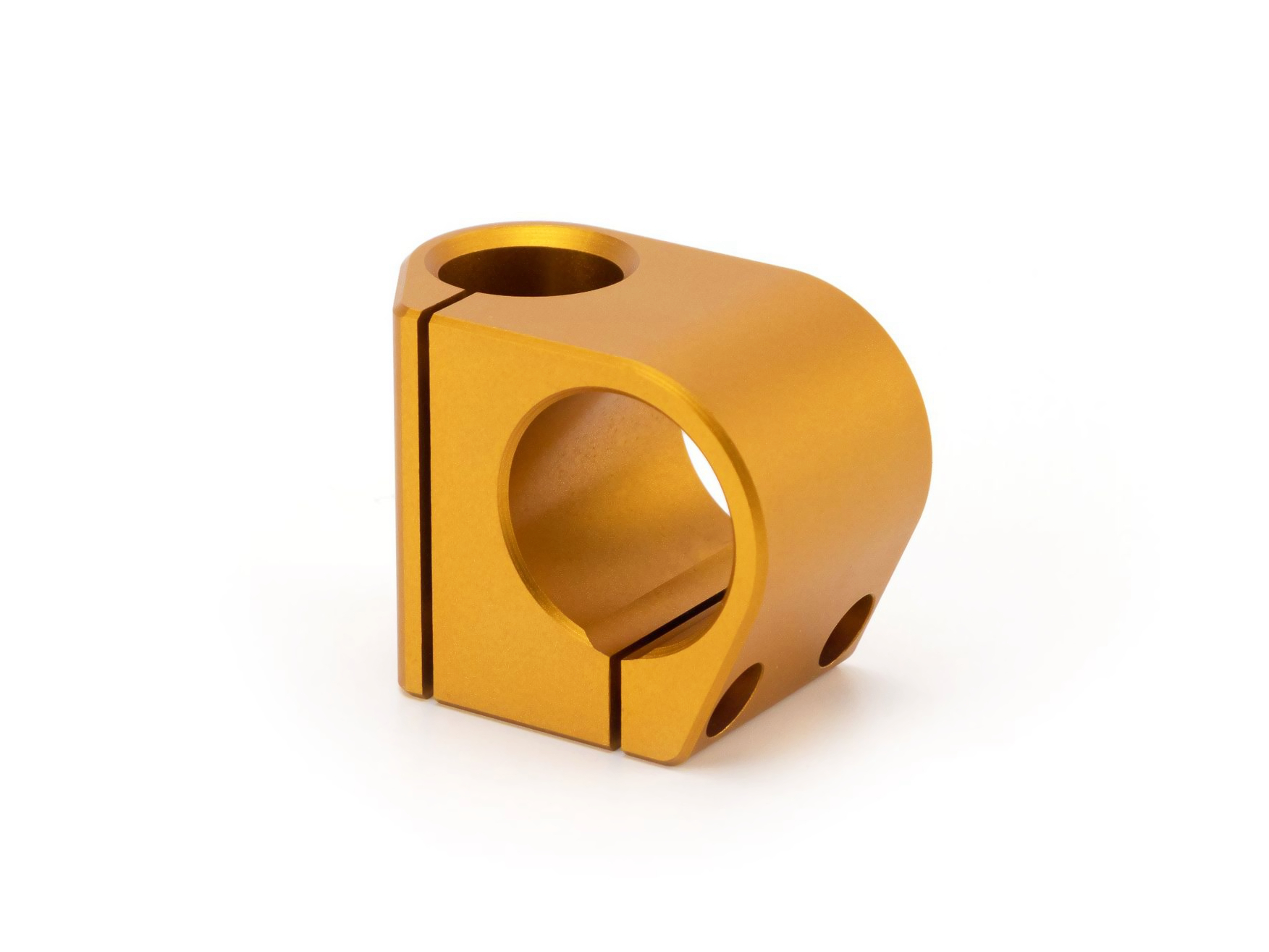How Aluminum ADC12 (A380) Casting and Machining Meets the Demands of Robotics
Introduction
The robotics industry increasingly requires materials that provide precise structural integrity, lightweight performance, and excellent machinability. Aluminum ADC12 (also known as A380) alloy is highly valued for its exceptional castability, good mechanical properties, strong dimensional stability, and corrosion resistance. These characteristics make ADC12 ideal for producing robotic arms, structural frames, precision gear housings, and lightweight actuator components.
Employing advanced CNC machining and casting techniques, robotics manufacturers can achieve high precision and complexity in ADC12 components. CNC machining allows exact dimensional control, intricate details, and superior surface finishes, thereby significantly enhancing robotic systems' accuracy, reliability, and efficiency.
Aluminum ADC12 for Robotics Applications
Material Performance Comparison
Material | Tensile Strength (MPa) | Yield Strength (MPa) | Density (g/cm³) | Typical Applications | Advantage |
|---|---|---|---|---|---|
320 | 160 | 2.76 | Gearboxes, robotic housings | Excellent castability, good machinability | |
310 | 276 | 2.70 | Robotic frames, precision brackets | Strong, lightweight, high corrosion resistance | |
570 | 505 | 2.81 | Structural robotic components, joints | Superior strength-to-weight, fatigue resistance | |
228 | 193 | 2.68 | Lightweight enclosures, casings | Excellent corrosion resistance, good formability |
Material Selection Strategy
Selecting aluminum alloys for robotic applications involves balancing strength, machinability, castability, and specific functional needs:
Gearboxes, actuator housings, and intricate robotic components benefit from Aluminum ADC12 (A380) due to its excellent castability, good mechanical strength (320 MPa tensile), and exceptional machinability, allowing for efficient production and precise performance.
Robotic structural frames, precision brackets, and lightweight supports requiring moderate strength (310 MPa tensile) and high corrosion resistance utilize Aluminum 6061-T6, ensuring longevity and stable performance.
Highly loaded robotic joints, critical structural elements, and components demanding extreme strength (570 MPa tensile) select Aluminum 7075-T6, significantly enhancing reliability in rigorous operational environments.
Lightweight enclosures, sensor casings, and components emphasizing corrosion resistance and formability prefer Aluminum 5052, providing durable protection and stable performance in diverse robotic environments.
CNC Machining Processes
Process Performance Comparison
CNC Machining Technology | Dimensional Accuracy (mm) | Surface Roughness (Ra μm) | Typical Applications | Key Advantages |
|---|---|---|---|---|
±0.02 | 1.6-3.2 | Simple robotic mounts, casings | Cost-effective, consistent results | |
±0.015 | 0.8-1.6 | Rotational gear components, joints | Enhanced precision, fewer setups | |
±0.005 | 0.4-0.8 | Complex actuator housings, precision gearboxes | Superior accuracy, excellent surface finishes | |
±0.003-0.01 | 0.2-0.6 | Precision sensors, micro-components | Maximum precision, intricate geometries |
Process Selection Strategy
Selecting appropriate CNC machining processes for Aluminum ADC12 robotic parts depends on complexity, precision, and functional requirements:
Simple robotic mounts, casings, and standard parts with moderate precision needs (±0.02 mm) economically employ 3 Axis CNC Milling, providing cost-effective, reliable accuracy.
Rotational gear components, robotic joints, and moderately intricate parts requiring higher accuracy (±0.015 mm) benefit from 4 Axis CNC Milling, reducing setups and enhancing dimensional precision.
Complex actuator housings, precision gearboxes, and detailed robotic components demanding tight tolerances (±0.005 mm) and superior surface finishes (Ra ≤0.8 μm) significantly benefit from 5 Axis CNC Milling, optimizing performance and functionality.
Precision robotic sensors, micro-components, and high-accuracy parts with extreme precision requirements (±0.003 mm) utilize Precision Multi-Axis CNC Machining, maximizing operational accuracy and reliability.
Surface Treatment
Surface Treatment Performance
Treatment Method | Corrosion Resistance | Wear Resistance | Max Operating Temp (°C) | Typical Applications | Key Features |
|---|---|---|---|---|---|
Excellent (≥800 hrs ASTM B117) | Moderate-High | Up to 400 | Robotic housings, actuator covers | Durable, aesthetic finishes | |
Excellent (≥1000 hrs ASTM B117) | High | Up to 200 | External robotic components, frames | Durable protection, aesthetic appeal | |
Excellent (≥1000 hrs ASTM B117) | Moderate | Up to 150 | Internal fittings, precision brackets | Excellent corrosion resistance, good paint adhesion | |
Excellent (~900 hrs ASTM B117) | Moderate | Up to 300 | Precision robotic sensors, micro-components | Smooth finish, reduced friction |
Surface Treatment Selection
Choosing surface treatments for Aluminum ADC12 robotic parts involves balancing corrosion protection, durability, and visual appeal:
Actuator covers, robotic housings, and visible components benefit from Anodizing, which provides long-lasting corrosion protection, appealing aesthetics, and enhanced durability.
External robotic components, structural frames, and casings requiring high wear resistance and attractive appearance utilize Powder Coating, significantly extending component lifespan.
Internal fittings, mounts, and components requiring excellent corrosion resistance and superior paint adhesion prefer Chemical Conversion Coating (Alodine), enhancing long-term reliability.
High-precision sensors and robotic micro-components demanding smooth finishes and minimal friction choose Electropolishing, optimizing both performance and aesthetics.
Quality Control
Quality Control Procedures
Precise dimensional inspection via Coordinate Measuring Machines (CMM) and optical comparators.
Surface roughness testing using high-precision profilometers.
Mechanical property evaluations (tensile, yield, fatigue) following ASTM standards.
Corrosion resistance verification through ASTM B117 (Salt Spray Test).
Non-destructive testing (NDT) methods, including ultrasonic and radiographic inspections.
Comprehensive documentation complying with ISO 9001 and robotic-specific industry standards.
Industry Applications
Aluminum ADC12 Robotic Component Applications
Precision gearboxes and actuator housings.
Robotic arm structural components.
Lightweight mounting brackets and fittings.
Complex robotic casings and protective covers.
Related FAQs:
Why choose Aluminum ADC12 for robotics applications?
How does CNC machining enhance ADC12 robotic part precision?
Which robotic components are best suited for Aluminum ADC12 casting?
What surface treatments are recommended for ADC12 robotics parts?
What quality standards apply to robotic Aluminum ADC12 machining?

